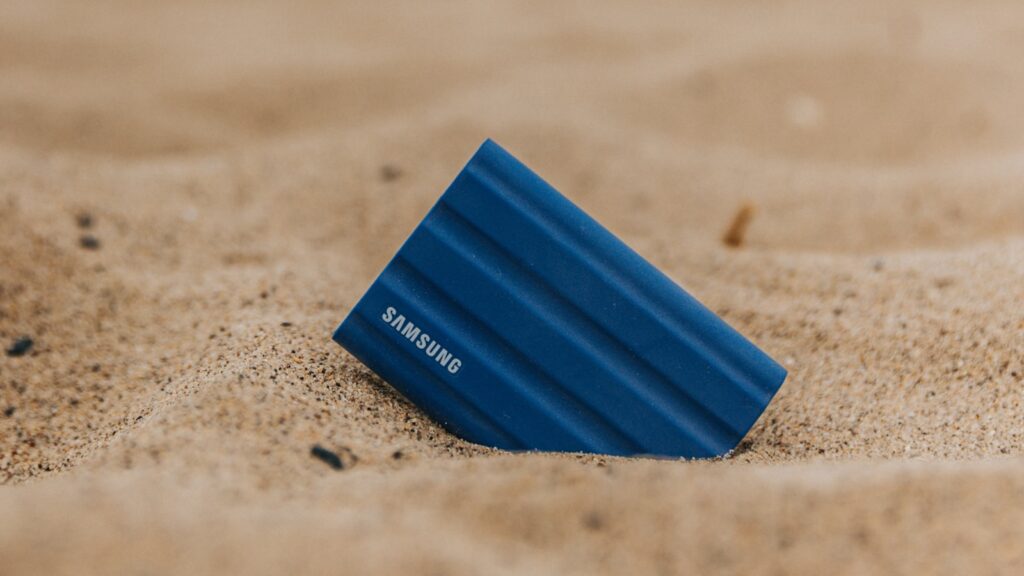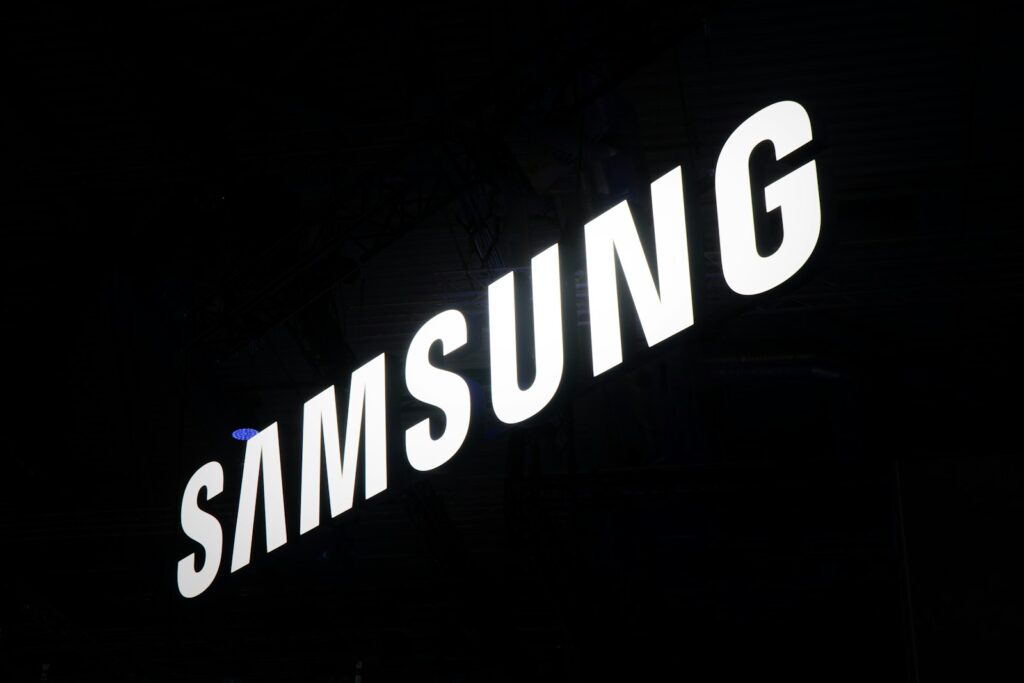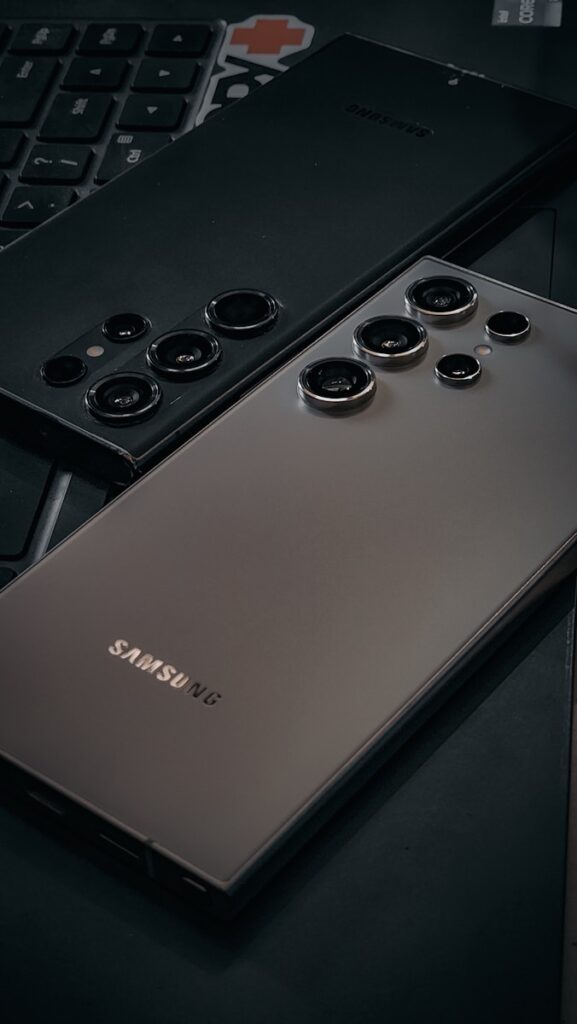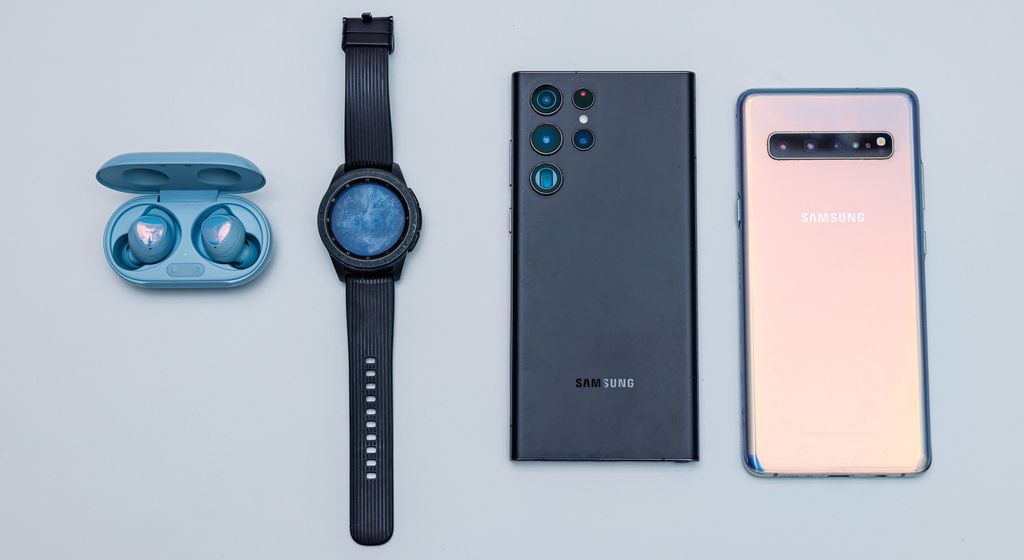
Samsung Electronics, which has been a formidable titan in the global semiconductor arena for years, is now at a critical juncture. Once having dominated the memory chip sectors and fiercely competing with TSMC in the logic chip field, the South Korean tech behemoth now finds itself navigating a complex period characterized by significant market share shifts and an urgent need to recalibrate its strategy in the burgeoning artificial intelligence (AI) domain. This pivotal moment has not only brought intense scrutiny but also an invigorated focus on the strategic transformations essential for future leadership.
The recent financial disclosures underscore the scale of the challenge Samsung faces. Its second-quarter operating profit saw a dramatic 55% plunge, settling at 4.7 trillion won ($3.4 billion) compared to a robust 10.4 trillion won ($7.5 billion) just a year prior. While revenue showed a modest increase over the same period, the erosion of profitability, particularly within its historically lucrative chip division, has sent clear signals across global markets.
This crucial chip division, which has traditionally accounted for an impressive two – thirds of Samsung’s total profit, experienced a nearly 94% contraction in operating profit from April to June compared to the previous year. Such a precipitous decline has naturally reignited concerns about the future trajectory of this embattled industry leader. The company itself has attributed this performance largely to factors including inventory value adjustments, reduced utilization rates in its contract chip – making operations, and the ongoing ramifications of US export controls targeting advanced AI chips destined for China, a pivotal market for Samsung.
Despite the immediate headwinds, a palpable sense of determination permeates Samsung’s strategic outlook. The tech giant had proactively prepared investors for its challenging performance earlier in the month through its earnings forecast. Crucially, the recent announcement of a substantial $16.5 billion deal with Tesla for new chip production offers a powerful testament to Samsung’s enduring capabilities and provides a promising boost to its forward – looking prospects.

For the latter half of the year, Samsung is charting an ambitious course, announcing its intention to proactively meet the escalating demand for high – value – added and AI – driven products. This strategic pivot entails a concerted effort to substantially enhance its competitive position in advanced semiconductors. The company’s commitment indicates not merely a reaction to current challenges, but a deliberate move towards shaping the future of high – tech innovation.
Navigating the Headwinds: Memory and Logic Chips Under Pressure
Samsung, as South Korea’s largest conglomerate, has recently faced formidable headwinds in its two fundamental revenue sources: the production of memory chips, which are crucial for device data storage, and logic chips, which serve as the computational engines for data processing. These intertwined challenges require a comprehensive re – evaluation of its market position and strategic implementation.
Once a preeminent player in memory chip production, Samsung has undeniably lost ground to formidable competitors, notably South Korea’s SK Hynix and America’s Micron Technology. This shift is particularly apparent in the burgeoning high – bandwidth memory (HBM) sector, an area that has become indispensable for the state – of – the – art AI processors developed by industry giants like Nvidia and AMD. HBM, fundamentally consisting of stacks of DRAM memory chips, is essential for short – term data storage in these advanced applications.
Product on Amazon: Samsung Galaxy Watch Ultra (2024) 47mm LTE AI Smartwatch w/Energy Score, Wellness Tips, Heart Rate Tracking, Sleep Monitor, Fitness Tracker, GPS,Titanium Silver [US Version, 1Yr Manufacturer Warranty]
Brand: Samsung
Binding: Electronics Product Group: Wireless
Price: 459 USD
Rating: 4.6 Total reviews: 693
Operating System: Tizen
Memory Storage Capacity: 32 GB
Special Feature: Touchscreen, Lightweight
Battery Capacity: 590 Milliamp Hours
Connectivity Technology: Bluetooth, Cellular
Wireless Communication Standard: 802.11ac
Battery Cell Composition: Lithium Ion
GPS: Built-in GPS
Shape: Round
Screen Size: 47 Millimeters
Features:
1. RUGGED. RELIABLE. READY FOR ANYTHING: Climb the highest peak; Bike the long way home; The durable titanium design is our toughest yet, able to stand up to the rigors of your workout, including rainy or dusty conditions — even ocean swimming¹
2. USE YESTERDAY TO BEAT TODAY: Meet your biggest competition — you; Challenge yourself to perform at your peak on your next run or bike ride using tracking with Galaxy AI²; It lets you compare your current performance to your last one³
3. KNOW YOUR SCORE. OWN YOUR DAY: Get personalized insights that help you perform at your peak every day; Know your physical readiness using Energy Score with Galaxy AI²; It calculates a score based on yesterday’s sleep, heart rate and steps⁴
4. PERSONALIZED TIPS TO UNLOCK THE BEST YOU: Stay at your best using daily personalized suggestions from Wellness Tips⁵; Gain information based on insights collected by your Watch and analyzed on your phone
5. MORE PRECISE HEART RATE TRACKING: Zero in on more precise readings during workouts using Heart Rate Tracking with Galaxy AI⁴ that filters out the physical movements of your body; Insights are collected by your Watch and analyzed on your phone
Top Review from US: “I got the 47mm Watch Ultra. I had a hard time spending so much on watch, but now that its on my wrist, I’m so glad I got it. This is the best watch I’ve ever had; better than I had expected. Everything works as advertised, plus lots of fuctions. The screen is so big, it’s easier to use than other smart watches I’ve had. The battery is really strong; I use it a lot at work for 12 hours and still go home with at least 75%. It keeps a charge better than my phone does. The microphone and voice-to-text works great. It’s loud at work and the mic on my old phone couldn’t hear me but this watch hears every word, crystal clear. Connectivity is great; I’ve had no problems with Bluetooth or WiFi, but I don’t use the 4G so I don’t know about that.My last watch was 42mm and this is 47mm. It looks and feels huge, but with the trail band, this is the most comfortable watch I’ve ever had. It’s the most customizable watch, too.I’m left handed, so I wear my watch on my right wrist. This is the 1st… …”
Shopping on Amazon >>

The competitive landscape in logic semiconductors poses its own distinct set of challenges for Samsung. Here, the company continues to lag behind the undisputed industry leader, TSMC, not only in the development of cutting – edge chip technologies but also significantly in terms of market share. Comprehensive data from the market research firm TrendForce provides a clear picture of this dynamic.
In the first quarter of the current year, SK Hynix notably overtook Samsung to claim the top spot in the global DRAM market. Concurrently, TSMC further consolidated its dominant position in logic chips, extending its dominance with an impressive 68% market share. In stark contrast, Samsung’s share in this critical segment stood at a mere 8%, highlighting the substantial gap it is striving to bridge in pursuit of greater market parity and technological advancement.
Missteps and Missed Opportunities in the AI Revolution
The current struggles faced by Samsung can be attributed to a series of strategic missteps, particularly management’s failure to adequately anticipate the monumental surge in demand for Artificial Intelligence. This sentiment was candidly expressed by Sanjeev Rana, head of Korea research at CLSA, a leading brokerage firm. He explained, “They were slow to recognize the impending AI revolution, and they bet on some other products and technologies, which, in hindsight, did not turn out to be very good bets.” He specifically noted that Samsung initially overlooked the immense potential of HBM.
This critical oversight had tangible consequences, resulting in Samsung missing out on a pivotal opportunity to become a primary supplier of its most advanced high – bandwidth memory product to Nvidia. Nvidia alone accounted for nearly 80% of global HBM demand last year, making this a substantial missed segment. Despite Samsung’s efforts, its product has “repeatedly failed Nvidia’s performance tests.” However, Rana optimistically projects that the company is poised to overcome these crucial hurdles within the next two months, signaling potential for future engagement.
While Samsung did announce in June that it had successfully secured orders from key players like AMD and Broadcom, the competitive reality is harsh. Rivals such as SK Hynix and Micron had already made progress, having begun delivering samples of even more advanced memory chips to customers. This rapid pace of innovation and market penetration by competitors has placed Samsung in a position of catching up, underscoring the urgency of its current strategic shifts.
Intensifying Pressure on Logic and the Impact of Geopolitics

Samsung’s ambitious logic – chip business, once envisioned as the direct challenger to TSMC’s industry leadership, is now facing mounting pressure. Despite having committed “tens of billions of dollars in investments over the past few years” to this critical segment, the company has, regrettably, been unable to secure “meaningful orders for its advanced chips.” This shortfall has led to the underutilization of its state – of – the – art facilities, imposing a significant operational and financial burden.
The financial implications of these challenges are considerable. CLSA’s estimates from last year painted a sobering picture, indicating that Samsung’s contract chipmaking business posted an operating loss of 5.6 trillion won ($4.1 billion). Alarmingly, this figure is projected to escalate to 6.6 trillion won ($4.8 billion) in the current year, underscoring the escalating financial strain within this division.
Compounding these business challenges are the broader geopolitical realities. US restrictions on the sale of advanced chips to China have significantly impacted Samsung’s revenue streams. As Joanne Chiao, an analyst at TrendForce, highlighted, “shipments to Chinese clients and projects were forced to pause pending regulatory review.” While some chips have now cleared the review process, the second quarter was undeniably “expected to be the most affected period,” reflecting the profound and immediate impact of these international trade dynamics on Samsung’s operations.
A Lifeline from Tesla: Charting a Path Forward
Product on Amazon: Practical Electronics for Inventors, Fourth Edition
Price: 24.29 USD
Rating: 4.7 Total reviews: 2201
Top Review from US: “As other reviewer has noted the authors have made a very concientious effort to try to be clear and practical. This is not a theoretical book, although chapter 2 “Theory” alone may well be worth the price for book. Chapter 2 is the most difficult, extensive and theoretical chapter in the book, but worth the effort. The explanations are very detailed and organized on different levels of difficulty. The authors are very systematic in their approach. All basic RC / LC / RLC circuits are explained by calculus, by mechanical / hydraulical analogues and the behaviour is summarized in tables at the end of each section. The authors make a consistent effort to make sure the reader grasps the essentials.Whether the mathematics used in Chapter 2 is difficult or easy depends on the reader’s prior background. Some knowledge of basic calculus helps, but is not an absolute requirement, as the solution of the equations is given and rather extensively explained by other means. Complex variables are… …”
Shopping on Amazon >>

Amidst the formidable challenges, a powerful signal of confidence and a tangible lifeline emerged this week in the form of a transformative deal with Tesla. Elon Musk, the visionary CEO of Tesla, publicly announced that the electric – vehicle and robotics powerhouse has selected the Korean chipmaker to produce its next – generation chips. This monumental $16.5 billion agreement is specifically earmarked for chips designed for Tesla’s cutting – edge self – driving cars and advanced humanoid robots, representing a significant strategic endorsement for Samsung.
Musk himself underscored the importance of this partnership in a post on X, stating, “Samsung’s giant new Texas fab will be dedicated to making Tesla’s next – generation AI6 chip.” He further emphasized a unique collaborative aspect: “Samsung agreed to allow Tesla to assist in maximizing manufacturing efficiency. This is a critical point, as I will personally oversee the process to accelerate the pace of progress.” This unprecedented level of engagement from Tesla’s leadership speaks volumes about the strategic value placed on Samsung’s manufacturing capabilities.
The market’s reaction was immediate and overwhelmingly positive. Following the news of the deal, Samsung’s shares surged by more than 6.9%, reaching their highest valuation since September. This surge reflects strong investor confidence in the long – term implications of such a high – profile partnership, signaling a renewed optimism in Samsung’s ability to secure critical future – oriented contracts.
It is noteworthy that Tesla already relies on Samsung for its AI4 chips, which are integral to its advanced driver assistance systems, known as Full Self – Driving (FSD) software. However, for its AI5 chips, Tesla had previously enlisted TSMC. This new deal for AI6 chips underscores a deepening reliance on Samsung, reaffirming its technological prowess in a highly competitive market.
The timing of this agreement is particularly strategic for Samsung, as it follows a decision to postpone the operational start of its chip – making plants in Taylor, Texas, from the original 2024 schedule to 2026. This delay was primarily due to Samsung’s struggle to secure sufficient customers for the ambitious project. The Tesla deal provides not only an anchor client but also a powerful validation of the Texas facilities’ future.
Ray Wang, research director specializing in the semiconductor industry at Futurum Group, characterized the deal with Tesla as “significant.” He highlighted its potential to meaningfully boost Samsung’s struggling profitability and, perhaps even more critically, to “validate its capabilities in producing advanced chips.” Wang further elaborated that this agreement will be instrumental in increasing the utilization of Samsung’s Texas facilities, thereby significantly improving the company’s return on investment.
Echoing this positive sentiment, Sanjeev Rana from CLSA, while acknowledging that mass production for the Tesla project is not slated to commence until 2027, nevertheless emphasized that the deal represents “a big vote of confidence” and a substantial boost to market sentiment. Rana further noted the proactive measures undertaken by Samsung’s leadership: “The management has done a lot of restructuring for this business in the last 12 – 15 months or so, so I think they now understand what the problems were, and they have made some efforts to resolve those issues,” concluding with a confident assertion that “Things will get better from the second half (of the year).”
Strategic Investments and the Path to AI Dominance
Product on Amazon: Tesla Wall Connector – Electric Vehicle (EV) Charger – Level 2 – up to 48A with 24′ Cable
Brand: Visit the Tesla Store
Price: 420 USD
Rating: 4.8 Total reviews: 1629
Product Dimensions: 4.3″D x 6.1″W x 13.6″H
Item Weight: 11.4 Pounds
Output Voltage: 240 Volts
Specification Met: [‘UL’, ‘CE’, ‘CEC’, ‘FCC’, ‘IEC’]
Features:
1. COMPATIBILITY: Wall Connector is compatible with all Tesla models: Model S, Model 3, Model X and Model Y.
2. CHARGING SPEED: Up to 44 miles of range per hour of charge, with up to 11.5 kW / 48 amp output, depending on Tesla model and breaker size.
3. CONVENIENCE: Indoor or outdoor installation with variable amperage that allows max output to be customized to an existing power supply and supports any output up to 48A. Possible max output configurations include: 48A, 40A, 32A, 24A, 16A, 12A.
4. CONNECTIVITY: Connecting the Wall Connector to a local Wi-Fi network enables over-the-air firmware updates for continual product improvements and remote access control.
5. POWER-SHARE: Power-share is ideal for locations that need to charge more than one Tesla at the same time. This functionality allows up to six Wall Connectors to be linked for efficient power management.
Top Review from US: “Ive owned a tesla for a few years. I have mostly used the wall plug to charge it. I had been considering upgrading to this charger for a long time, and I gotta say it was definitely the right choice! My car is now charging 10x faster and I am not even getting full output yet. Install is electrical work but its pretty easy. I got the wrong fuse so I had to go back out, but if I hadnt, I think it would have taken about 2 hours to install. It is incredibly easy to use; plug and play. The quality is great. I havent had any heat issues. While I wouldnt recommend buying a tesla in general, I do endorse this charger!
Shopping on Amazon >>

Samsung’s unwavering commitment to regaining its competitive edge in the semiconductor space is further evidenced by its aggressive investment strategy. The company is actively increasing its research and operating costs, with executives confirming that spending on memory would “remain at a similarly elevated level as last year.” In 2024 alone, total capital expenditures amounted to a staggering 53.6 trillion won ($37 billion), signaling a firm resolve to invest heavily in its future capabilities.
This substantial financial push has already yielded tangible results. Samsung has secured long – delayed approval for its supply of 8 – layer HBM3E chips to Nvidia Corp. This specific type of high – bandwidth memory, while considered less advanced than what SK Hynix currently supplies, is critically designated for use with AI processors tailored for the burgeoning Chinese market. This approval marks a crucial step in re – establishing Samsung’s presence within Nvidia’s supply chain, particularly for this strategic region.
However, the path to full recovery remains nuanced. Samsung’s semiconductor unit, despite these efforts, reported an operating profit of 2.9 trillion won for the December quarter, falling short of analysts’ average projections. The company also forecast limited earnings growth for the current quarter, highlighting that the impact of elevated spending and exposure to legacy DRAM products continues to weigh on its financial performance.
Executives from Samsung have openly discussed the evolving HBM landscape. Kim Jaejune, executive vice president of Samsung’s memory business, noted during a recent earnings call that there would be “a temporary constraint on HBM sales in the first quarter,” partly attributable to US curbs and concerted efforts to launch an improved version of its HBM3E chips. He further elaborated, “There has been a shift among major customers who are opting to wait for enhanced HBM3E products, which may potentially result in a temporary gap in HBM demand,” indicating a sophisticated and discerning market for these advanced components.

Adding a layer of authoritative perspective, Nvidia Chief Executive Officer Jensen Huang, speaking at CES, commented on Samsung’s progress, stating that the company “will have to engineer a new design. But they can do it. They are working very fast. They are very committed to doing it.” Such a vote of confidence from a key industry leader like Huang underscores the collective belief in Samsung’s engineering capabilities and its capacity for rapid adaptation. Samsung also stated that it expanded its HBM3E supply to multiple GPU and data center providers in the fourth quarter and has provided samples of its next – generation HBM4 chips to customers, with a plan to supply them next year.
Addressing Challenges and Future Outlook
Beyond the immediate financial figures, Samsung’s leadership has been forthright in acknowledging the challenges. Young Hyun Jun, Vice Chairman of Samsung’s Device Solutions Division, admitted, “We have caused concerns about our technological competitiveness, with some talking about the crisis facing Samsung.” He further described these as “testing times,” yet expressed unwavering confidence in the company’s ability to navigate the situation. His pledge to “focus on enhancing Samsung’s long – term technological competitiveness” resonates deeply with the company’s strategic vision.
The complexities extend to its contract chip manufacturing business, which, analysts suggest, continues to compete fiercely against the market dominance of TSMC. TSMC’s formidable client roster, including industry giants like Nvidia and Apple, presents a consistent benchmark for Samsung to aspire to and surpass in the foundry space. Overcoming these entrenched competitive dynamics requires sustained innovation and strategic client acquisition.
Product on Amazon: SAMSUNG T7 Portable SSD, 2TB External Solid State Drive, Speeds Up to 1,050MB/s, USB 3.2 Gen 2, Reliable Storage for Gaming, Students, Professionals, MU-PC2T0H/AM, Blue
Brand: Visit the Samsung Store
Price: 137.99 USD
Rating: 4.7 Total reviews: 35675
Digital Storage Capacity: 2 TB
Hard Disk Interface: USB 3.2
Connectivity Technology: USB
Hard Disk Form Factor: 2.5 Inches
Hard Disk Description: Solid State Hard Drive
Compatible Devices: PC, Gaming Console, Tablet, Smartphone, Mac
Installation Type: External Hard Drive
Color: Blue
Features:
1. MADE FOR THE MAKERS: Create; Explore; Store; The T7 Portable SSD delivers fast speeds and durable features to back up any endeavor; Build your video editing empire, file your photographs or back up your blogs all in an instant
2. SHARE IDEAS IN A FLASH: Don’t waste a second waiting and spend more time doing; The T7 is embedded with PCIe NVMe technology that brings fast read and write speeds up to 1,050/1,000 MB/s¹, making it almost twice as fast as the T5
3. ALWAYS MAKE THE SAVE: Compact design with massive capacity; With capacities up to 4TB, save exactly what you need to your drive – from large working files to game data and everything in between
4. ADAPTS TO EVERY NEED: Whether using a PC or mobile phone, count on the T7 for extensive compatibility²; It’s a true team player when it comes to heavy-duty application usage or file-saving
5. HI RESOLUTION VIDEO RECORDING: Record Ultra High Resolution (4K 60fs) videos directly onto the T7 Portable SSD with your favorite camera or mobile devices; Supports iPhone 15 Pro Res 4K at 60fps video and more³
Top Review from US: “This SSD is everything I was looking for. It’s incredibly fast—I can transfer large video files in seconds—and it works flawlessly with my Mac. The compact design makes it easy to travel with, and it feels solid and well-made.Setup was quick, and I really like the optional password protection for added security. Whether I’m backing up files or editing off the drive, the performance is consistently smooth. Highly recommend if you need dependable external storage with top-notch speed.”
Shopping on Amazon >>
Samsung’s efforts are also buoyed by a significant development in the broader trade environment. The company has acknowledged that a newly – concluded trade deal between South Korea and Washington will play a crucial role in alleviating business uncertainty. This agreement, under which the US charges a 15% tariff on imports from South Korea, down from a potential 25%, eases tensions with a key trading partner and vital Asian ally, providing a more stable ground for Samsung’s global operations.
Samsung Vice President Noh Mi – jung conveyed a sense of optimism regarding future prospects, stating on an earnings call that, “Building on this milestone, we anticipate securing additional orders from large customers,” referring to the positive momentum initiated by the Tesla deal. She also reaffirmed that Samsung’s new US semiconductor factory in Texas, which is poised to produce chips for Tesla, remains “on track to begin production in 2026,” showcasing disciplined execution despite earlier delays.
However, as Greg Roh, head of research at Hyundai Motor Securities, keenly observed, “The key to the Tesla order is how much Samsung will be able to address production yield issues for its advanced 2 – nanometer chips.” This highlights that while securing orders is vital, operational excellence and yield management will be paramount to translating these wins into sustained profitability.
A Resilient Future in the AI Era

The journey for Samsung Electronics, as it navigates the complex and rapidly evolving landscape of the semiconductor industry, is undeniably one of profound transition and transformation. The recent financial reports, while highlighting significant challenges, simultaneously illuminate a company that is rigorously engaged in strategic recalibration and aggressive investment. Its profit plunge is not merely a setback, but a catalyst for intensified focus on the very technologies that will define the next era of global innovation.
From its candid admission of past missteps in anticipating the AI revolution to its proactive engagement with industry leaders like Tesla, Samsung is demonstrating a powerful blend of humility and determination. The strategic alignment towards high – value, AI – driven products, coupled with substantial capital expenditures in advanced manufacturing and R&D, underscores a clear vision for reclaiming its leading position. The collaborative spirit, exemplified by the Tesla partnership and the ongoing pursuit of Nvidia’s stringent HBM certifications, speaks to a renewed resolve to build critical alliances and adapt swiftly to market demands.
The competitive pressures from SK Hynix, Micron, and TSMC are formidable, and geopolitical factors add layers of complexity. Yet, Samsung’s deep – seated engineering prowess, vast resources, and global reach equip it with unique resilience. The investments in its Texas facilities, the focus on advanced processes like 2 – nanometer chips, and the relentless drive to refine its HBM offerings are all pieces of a meticulously crafted puzzle designed to secure its future.
Read more about: 14 Mind-Blowing Facts About the World That Will Absolutely Shock You

Product on Amazon: Samsung Galaxy Tab A9+ Tablet 11” 64GB Android Tablet, Big Screen, Quad Speakers, Upgraded Chipset, Multi Window Display, Slim, Light, Durable Design, US Version, 2024, Graphite
Brand: Visit the Samsung Store
Price: 155.72 USD
Rating: 4.4 Total reviews: 15286
Model Name: A9+
Memory Storage Capacity: 64 GB
Screen Size: 11 Inches
Display Resolution Maximum: 1920 X 1200 (WUXGA) Pixels
Features:
1. BIG SCREEN. FAMILY-SIZED FUN: Bring fun home to everyone with a bright, engaging screen; great for videos, games or fun time for the kids (11” 1920 x 1200, 90Hz, 480 nits, TFT LCD)
2. RICH SOUND ALL AROUND: Your music; Your shows; Your games; Hear them all loud and clear, thanks to quad speakers powered by Dolby Atmos; Galaxy Tab A9+ delivers a cinema-like audio experience your ears will love
3. POWER FOR ALL YOU DO. STORAGE FOR ALL YOU LOVE: Watch videos, play games and do more with an upgraded chipset; 4GB RAM + 64GB | 8GB RAM + 128GB | Up to 1TB expandable storage; Processor Qualcomm Snapdragon 69
4. SEE and USE MULTIPLE APPS AT ONCE: Open multiple apps at once with Galaxy Tab A9+ and accomplish more seamlessly; Bounce between the things like a multitasking pro — browse the internet, check email and jot down notes all on one screen
5. LOVED BY KIDS. TRUSTED BY PARENTS: Give your kids a safe place to learn and play with the Samsung Kids app⁵ ; Kids will love a wide variety of playful, colorful content that keeps them entertained while stimulating their young minds
Top Review from US: “I needed a tablet so I first went cheap and got a generic. Then realized that I needed the Samsung playstore to play the games I like. So, I found this tablet instead. I’m very happy I did! Not just for the games I can get, but because it’s a great tablet!It was easy to find a screen protector and slimcase for it. The screen has nice resolution for watching movies and such. Best of all, imo, is tye sound quality! I got a Bluetooth speaker to use with my original cheap tablet, and the tablet had awful sound so I needed that speaker. But with this one, the sound is so good that I can just use the tablet without a special speaker. I can’t remember ever having one that didn’t sound awful before this. I’m very impressed with the quality that Samsung has been able to achieve here! And while not the cheapest option, very low cost for something so quality, and of this brand.Battery life: very impressive! I had it charged to around 97% and started watching a show on it. 3 hours later, the… …”
Shopping on Amazon >>
Read more about: Liechtenstein in a Day: Your Essential Guide
Samsung’s narrative is a compelling testament to the dynamic nature of the tech world, where even established giants must continuously innovate, adapt, and occasionally, make course corrections with bold strokes. The path ahead requires not just technological breakthroughs, but also strategic foresight and flawless execution. The company is not merely hoping for a recovery; it is actively engineering one, thereby cementing its role in shaping the very future of artificial intelligence. As the second half of the year unfolds, the industry will keenly observe Samsung’s trajectory, being confident in its capacity to emerge from these “testing times” with renewed vigor and a strengthened position at the vanguard of technological progress.



